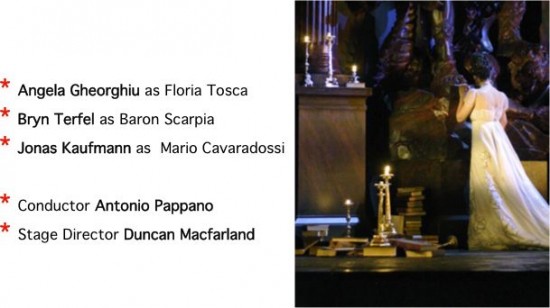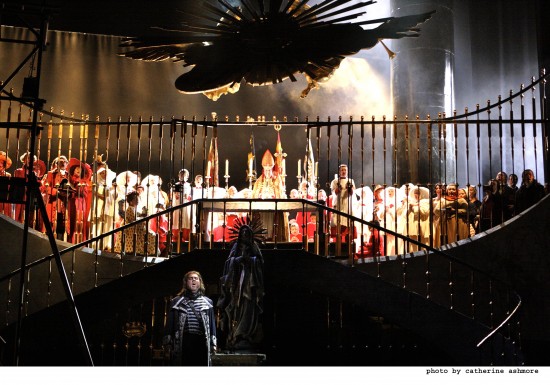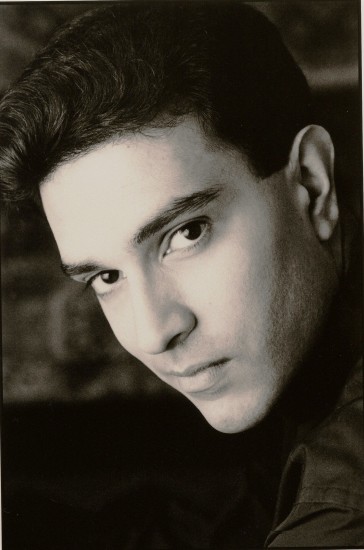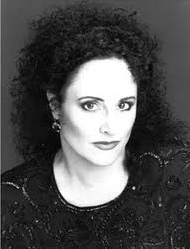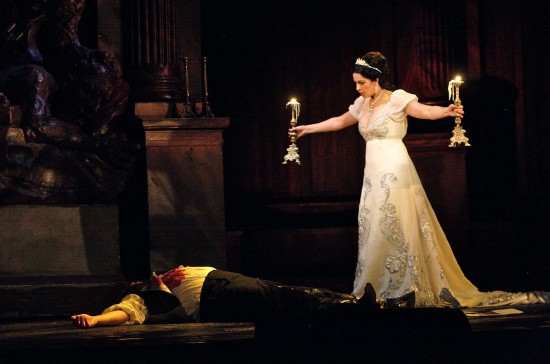Tosca is one of my favorite operas. The complex dramatic plot and the sublime music of Giacomo Puccini alone are enough to put it in my top ten. First, the music is so melodic, so listenable that I find myself humming bits of it for weeks after attending a performance. In addition, the music and the words and the action are so perfectly blended that the whole is far greater the sum of its already great parts.
With such a great start, it is almost impossible for an opera company with even a modicum of talent to produce a “bad” Tosca. Indeed, I have been to many, many performances over the years and only once have I been seriously disappointed. I have seen many “good” Tosca but only four “excellent” Tosca: (West Bay Opera, 2002; Pocket Opera, 2004; MetHD, 2009; and Royal Opera House, 2011)
Tosca is, I believe, unique among operas in that each of its three acts ends with what can be a heart-stopping climax. Everyone knows that Acts II and III end, respectively, with murder and suicide. What is not so well known is that the finale to Act I is capable of producing a very different climax. At the back of the stage a choir is singing a beautiful solemn De Teum. In front Scarpia is telling the audience with what lustful satisfaction he is going to hang Cavaradossi and “seduce” Tosca. The divine words of the choir and Scarpia’s profane words are each sung to entirely appropriate music. When the two are perfectly balanced, the resulting dissonance creates an almost unbearable musical tension.
In fact, before last Sunday, November 6, 2011, the only way I knew that the tension even existed was from the Pocket Opera production in 2004. The 8-piece plus piano orchestra and a choir to match were in perfect balance with the magnificent bass-baritone voice of Shouvik Mondle.
While we’re on the subject, let me contrast the two best (by far) Scarpias I have ever experienced. They are both evil incarnate, but they were so different. Mondle was cold and inhuman – almost unhuman. His very stance oozed menace.
Bryn Terfel was hot and more animal than human. He literally drooled with anticipation of the pain he could and would inflict. The day before I had seen him play a wise and thoughtful Wotan. Not many actors could be so convincing in two such different personalities. Which made the better Scarpia? No need to answer that question. Both were frighteningly perfect – and both were in absolute harmony with the music and words of the opera.
Act II actually has two climaxes. The first one occurs when Cavaradossi”� (Jonas Kaufmann) is hauled away to be hanged, cursing Tosca for having betrayed him but joyously defiant with the news of Napoleon’s victory.
Let’s pick up the action when the door closes after Cavaradossi’s exit. Tosca (“�Angela Gheorghiu) pleads for mercy. Scarpia says, “It’s not up to me, dear lady. It’s up to you to save his life.” Tosca is puzzled for a moment, then thinks that Scarpia is asking for a bribe. “Quanto? (How much?)” she hisses, her voice dripping with scorn (don’t ask me how one can hiss a word without an “S” – Gheorghiu hissed “Quanto?”). Scarpia almost laughs as he explains he doesn’t want money from a beautiful lady. Again, it takes Tosca a moment to comprehend his base meaning. Thanks to the close-up camera we can follow the thought-process on Gheorghiu�s face: disbelief, outrage, shame, anger.
Time stands still as she sings her show-stopping aria, Visse d’Arte. Then comes the verbal acceptance by Tosca, Scarpia’s easy two-faced agreeing to pardon and issue safe-conduct passes, and his double-edge instructions to Spoletta (“�Martyn Hill).
Nine years ago I saw an unforgettable scene of what comes next. Here is what I wrote at the time.
I have to tell you about Julia Kierstine as Tosca with West Bay Opera last October. I may have mentioned before that my ear is incapable of distinguishing between great singing and very good singing. There have probably been stars in big companies who have sung the role even better that she did – I wouldn’t know. But no one could possibly act it better. The plot of Tosca has no surprises for me by now. In the second act I know she is going to pick up a knife and stab Scarpia. But I was on the edge of my seat watching and listening to her. Every line in her face, every muscle in her body showed her going from horror at having to accept Scarpia’s proposition to the final resolve to kill him. Her eyes moving like those of a trapped animal passing over the knife on the table without seeing it; returning to it. Her two hands, white-knuckled, gripping the wine glass as she takes a desperate sip; again reaching towards the knife and withdrawing; reaching again; putting down the glass and picking up the knife. . . Even now, I get goose bumps writing about it.
With that scene from 2002 still vivid in my memory banks, and with the superb acting of “�Angela Gheorghiu during the previous scene with Cavaradossi fresh in my mind, I was on edge with anticipation – I was not disappointed! The action was quite different in the two performances, yet each one was excruciatingly dramatic. Kierstine started the build-up when Scarpia began to write the pardon and had plenty of time to increase the tension slowly. He finished writing and walked towards her. He had his arms around her in amorous embrace, presumably as a first step towards the couch. She had her right arm around him and drove the knife in from the back.
Gheorghiu and Terfel were much more closely entwined. She watched his every move while he was writing and only started towards the table as he was blotting the ink. She saw the solution to her problem with her first glance at the knife, and grabbed it up just in time. He was already moving towards her and just missed seeing her pick up the knife. He lunged towards her forcing her back towards and onto the table. She held the knife firmly as he fell upon her – his own body-weight provided the momentum that drove the knife into his chest.
I assume that the live performance in La Scala provided a real intermission before Act III so that the audience could stretch their legs a bit and return to their seats with pulses back to near-normal. At this HD encore, it was as if the curtain ending Act II fell on a trampoline and immediately bounced back up to start Act III. Thank goodness for Puccini’s genius in starting Act III with that peaceful shepherd’s song before catching us up in the final betrayal and suicide.
In no other production of Tosca have I been so conscious of the enormous emotional difference between Acts II and III. The former was all about Lust and Hate and Fear; Act III was about love. Other Toscas have jumped or hurled themselves to destruction as a final act of defiance.
In this production the real climax was Tosca’s anguished, “Mario” when she realized that all of her dreams were gone. Her lover was gone. Life was no longer worth living – take the quickest route out. Gheorghiu did not run, pause, and jump. She simply walked to one step beyond the edge of the parapet with the inevitability of a Greek tragedy.
Three acts. Three emotional climaxes, each one so different. Do you wonder that I was so emotionally exhausted.
There are a few theatres in the country where Tosca is scheduled for December. Go to operaincinema.com and enter Tosca in the “Search” box in the top menu for a list of theatres to find the name of a theatre near you and the dates it will be playing there.
Good luck and Ciao,
The Opera Nut
Camera 3 Cinema
288 S 2nd St
San Jose, CA 95113
(408) 395-6465
cameracinemas.com
Except as noted otherwise, Photos: ©The Royal Opera/ Catherine Ashmore November 2010
This review by Philip G Hodge appeared in sanfranciscosplash.com on November 18, 2011.

